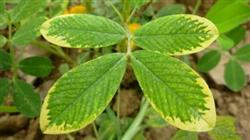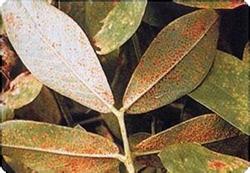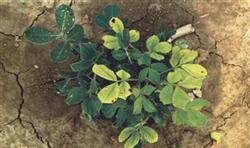How does peanut sheath blight occur? How to prevent and cure?

How does peanut sheath blight occur? How to prevent and cure? (1) incidence regularity: peanut sheath blight is a disease caused by basidiomycetes. The young hyphae are colorless and yellowish brown when mature; they are branched, constricted obviously at the branches, and there is a septum not far from the branches. The mycelium on the surface of diseased tissue can form sclerotia, the surface of sclerotia is rough, at first white, then becomes dark brown, nearly spherical, oblate or irregular, the sclerotia is black inside and outside, and the protruding invagination is honeycomb. The pathogen likes high temperature and high humidity, and the suitable temperature for development is 28-31. The pathogen overwintered with sclerotia or mycelium in the remnants of diseased plants or in soil. Under suitable environmental conditions, sclerotia germinated and grew hyphae, invaded from the natural orifice and infected neighboring healthy plants by contact. The sclerotia of the disease department can also spread and re-infect by wind, rain and running water. High temperature and heavy rain, stagnant water in peanut field, over application of nitrogen fertilizer, closed field and high humidity are beneficial to the occurrence of sheath blight. The sheath blight of previous crops is serious, and so is peanut sheath blight. (2) Control methods: ① does not grow peanuts in rice fields with serious sheath blight. Peanut fields should be drained in time, reduce field humidity, apply appropriate amount of nitrogen fertilizer, increase phosphorus and potassium fertilizer, and reasonable close planting. ② uses 2% Jinggangmycin 800g 1000 times liquid, spray solution 60kg / mu, or 5% Tianan emulsion (methyl arsenate amine) 150g 200g, 50% carbendazim wettable powder 100g, 70% methyl thiophanate wettable powder 100g, 50% wenkuli emulsion 100g, spray 60kg / mu of water.
- Prev

What are the reasons for the occurrence and prevalence of peanut rust?
What are the reasons for the occurrence and prevalence of peanut rust? Peanut rust is a fungal disease caused by peanut stalk rust. The summer spores are yellow, round or nearly round, with micro-thorns on the surface, and there is a germination hole on each side of the middle part of the summer spores. Most summer spores produce only one germinating tube, which forms appressorium at the top of the germ tube.
- Next

Main Technical points of fertilization for Peanut
How do peanuts perform when they are short of evidence? How to prevent and cure? The main results are as follows: (1) the characteristics of deficiency: when peanut is deficient in aluminum, the plant is short and the leaves are small and thin, showing yellowish green, which is the same as the typical symptoms of nitrogen deficiency. If the above symptoms occur when the nitrogen nutrition is sufficient, the problem of steel deficiency should be taken into account. (2) Prevention and control measures: potassium lead acid.
Related
- The first cup of black tea in spring, the flavor and history of tea gardens in Kenya, Africa
- The computer can not only choose potatoes, but also grow tea rice. AI will grow winter oolong tea champion.
- It is not only the inflated tea bitten by insects, but also engraved with the four seasons tea in Beipu.
- The Oriental Beauty Tea Festival in Zhuxian County takes the stage at the weekend to experience the plus-size feast of oil tea.
- & quot; Oriental Beauty Tea & Exploration of Emei in Hsinchu, the hometown of quot;
- The new variety of strawberry "Tainong 1" dessert is the first choice with mellow aroma. Crimson gorgeous
- History of Tea in Taiwan: from Wild Inner Mountain to Export Tea Garden
- Two types of Taiwan Oriental Beauty Black Tea won the British three-Star Award for Childhood Tea Xiang Zhang Jiaqi changed from pilot to champion tea maker.
- Banana species and varieties: the planting history of Taiwan Xianren banana and dwarf banana is long, is banana disease resistant?
- Coffee planting Technology: Qianjie Coffee from Seedling to harvesting

